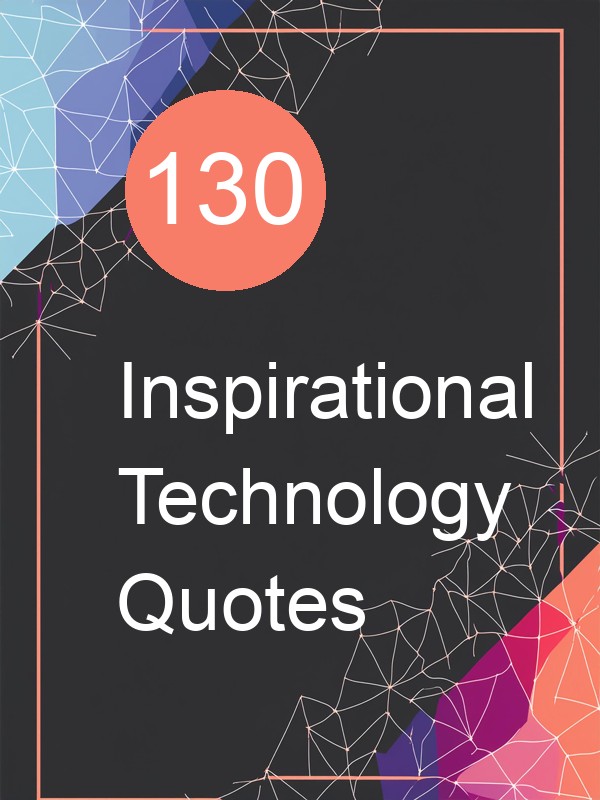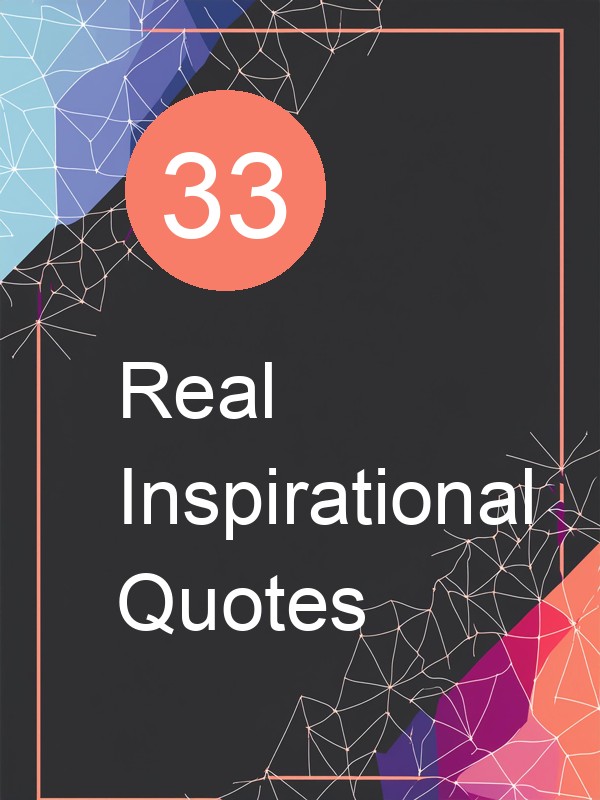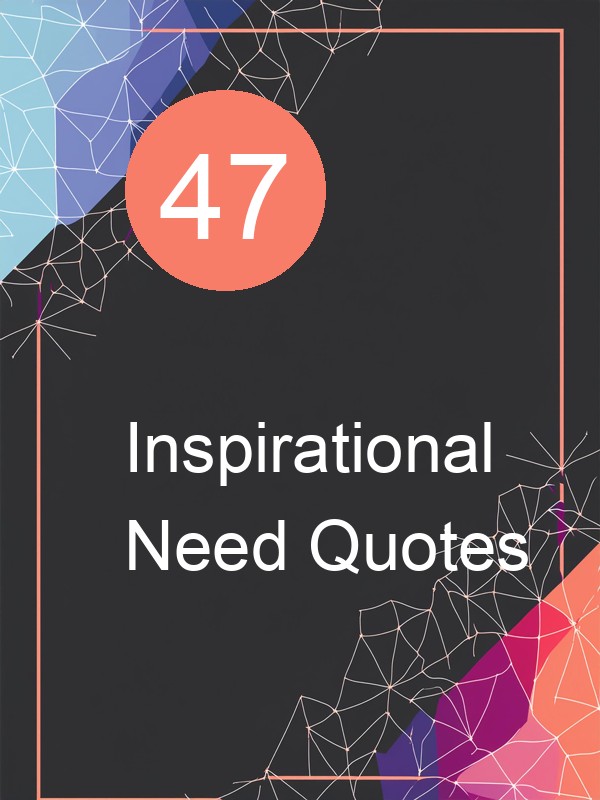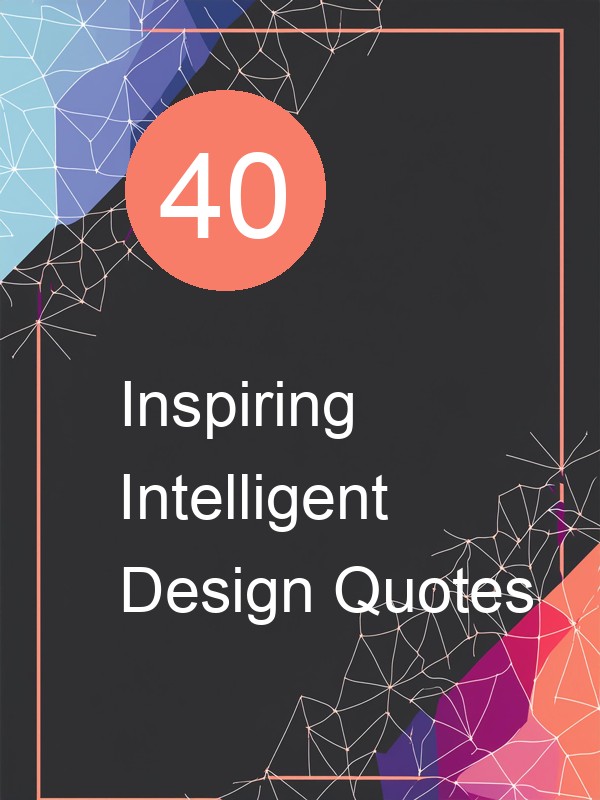In the ever-evolving world of design, inspiration is the fuel that drives creativity and innovation. Whether you’re a seasoned professional or just starting your journey, a powerful quote can spark new ideas and give you the motivation to push boundaries. We've curated a collection of the top 83 inspiring design quotes to ignite your passion and remind you why you fell in love with design in the first place. Dive into these words of wisdom from some of the greatest minds in design and let their insights elevate your creative process.
1. “Perfection is achieved, not when there is nothing more to add, but when there is nothing left to take away.” - Antoine de Saint-Exupéry
2. “The total amount of suffering per year in the natural world is beyond all decent contemplation. During the minute that it takes me to compose this sentence, thousands of animals are being eaten alive, many others are running for their lives, whimpering with fear, others are slowly being devoured from within by rasping parasites, thousands of all kinds are dying of starvation, thirst, and disease. It must be so. If there ever is a time of plenty, this very fact will automatically lead to an increase in the population until the natural state of starvation and misery is restored. In a universe of electrons and selfish genes, blind physical forces and genetic replication, some people are going to get hurt, other people are going to get lucky, and you won't find any rhyme or reason in it, nor any justice. The universe that we observe has precisely the properties we should expect if there is, at bottom, no design, no purpose, no evil, no good, nothing but pitiless indifference.” - Richard Dawkins
3. “aesthetic isn't simply about good design for good design's sake.” - Noah Kerner
4. “Sure some medical experts say coffee could be a health hazard, but they obviously never built a web site before!” - Geoff Blake
5. “Everything is design. Everything!” - Paul Rand
6. “...But I own that I cannot see as plainly as others do, and as I should wish to do, evidence of design and beneficence on all sides of us. There seems to me too much misery in the world. I cannot persuade myself that a beneficent and omnipotent God would have designedly created the Ichneumonidæ with the express intention of their feeding within the living bodies of Caterpillars, or that a cat should play with mice... I feel most deeply that the whole subject is too profound for the human intellect. A dog might as well speculate on the mind of Newton. Let each man hope and believe what he can.” - Charles Darwin
7. “You must forget all your theories, all your ideas before the subject. What part of these is really your own will be expressed in your expression of the emotion awakened in you by the subject.” - Henri Matisse
8. “I am enthusiastic over humanity’s extraordinary and sometimes very timely ingenuity. If you are in a shipwreck and all the boats are gone, a piano top buoyant enough to keep you afloat that comes along makes a fortuitous life preserver. But this is not to say that the best way to design a life preserver is in the form of a piano top. I think that we are clinging to a great many piano tops in accepting yesterday’s fortuitous contrivings as constituting the only means for solving a given problem.” - Richard Buckminster Fuller
9. “When you want to know how things really work, study them when they're coming apart.” - William Gibson
10. “Real web designers write code. Always have, always will.” - Jeffrey Zeldman
11. “Places matter. Their rules, their scale, their design include or exclude civil society, pedestrianism, equality, diversity (economic and otherwise), understanding of where water comes from and garbage goes, consumption or conservation. They map our lives.” - Rebecca Solnit
12. “A man who works with his hands is a laborer; a man who works with his hands and his brain is a craftsman; but a man who works with his hands and his brain and his heart is an artist.” - Louis Nizer
13. “The life of a designer is a life of fight: fight against the ugliness.” - Massimo Vignelli
14. “If there is shit all around me, how can I eat my ice cream?” - S Balaram
15. “In a meat-eating world, wearing leather for shoes and even clothes, the discussion of fur is childish.” - Karl Lagerfeld
16. “Clear thinking at the wrong moment can stifle creativity.” - Karl Lagerfeld
17. “Absurdity and anti—absurdity are the two poles of creative energy.” - Karl Lagerfeld
18. “Fashion is a language that creates itself in clothes to interpret reality.” - Karl Lagerfeld
19. “I like to reinvent myself — it’s part of my job.” - Karl Lagerfeld
20. “The woman is the most perfect doll that i have dressed with delight and admiration.” - Karl Lagerfeld
21. “I believe in doing the thing you feel is right. If it looks right, it is right.” - Dorothy Draper
22. “Als een site is voorzien van een elegant design maar verder niet bruikbaar is, zal de site falen. Het omgekeerde is echter ook van toepassing! Als een site perfect bruikbaar is maar is voorzien van een volkomen ongeïnspireerd en oersaai non-design, zal hij eveneens falen.” - Peter Kassenaar
23. “Planning is for the world's great cities, for Paris, London, and Rome, for cities dedicated, at some level, to culture. Detroit, on the other hand, was an American city and therefore dedicated to money, and so design had given way to expediency.” - Jeffrey Eugenides
24. “As a designer, you have to think in time and see things in sequence. You have to see information as a narrative form - Paul Mijksenaar quoted by Kim Baer” - Paul Mijksenaar
25. “For a brief period of time the American electric-sign industry looked beyond its most immediate market and collaborated with store designers and architects in creating a style which became known as 'stream-line.' Later it became known as 'American Déco.' Whatever it was called or will be called in the future, it represents in terms of neon a thrust away from isolated signage toward an area of architectural ornamentation in which signage is but one element in an overall plan. — Rudi Stern” - Philip Di Lemme
26. “Typography is the craft of endowing human language with a durable visual form.” - Robert Bringhurst
27. “Designers provide ways into—and out of—the flood of words by breaking up text into pieces and offering shortcuts and alternate routes through masses of information. (...) Although many books define the purpose of typography as enhancing the readability of the written word, one of design’s most humane functions is, in actuality, to help readers avoid reading.” - Ellen Lupton
28. “Readers usually ignore the typographic interface, gliding comfortably along literacy’s habitual groove. Sometimes, however, the interface should be allowed to fail. By making itself evident, typography can illuminate the construction and identity of a page, screen, place, or product.” - Ellen Lupton
29. “A city street equipped to handle strangers, and to make a safety asset, in itself, our of the presence of strangers, as the streets of successful city neighborhoods always do, must have three main qualities:First, there must be a clear demarcation between what is public space and what is private space. Public and private spaces cannot ooze into each other as they do typically in suburban settings or in projects.Second, there must be eyes upon the street, eyes belonging to those we might call the natural proprietors of the street. The buildings on a street equipped to handle strangers and to insure the safety of both residents and strangers, must be oriented to the street. They cannot turn their backs or blank sides on it and leave it blind.And third, the sidewalk must have users on it fairly continuously, both to add to the number of effective eyes on the street and to induce the people in buildings along the street to watch the sidewalks in sufficient numbers. Nobody enjoys sitting on a stoop or looking out a window at an empty street. Almost nobody does such a thing. Large numbers of people entertain themselves, off and on, by watching street activity.” - Jane Jacobs
30. “[Public housing projects] are not lacking in natural leaders,' [Ellen Lurie, a social worker in East Harlem] says. 'They contain people with real ability, wonderful people many of them, but the typical sequence is that in the course of organization leaders have found each other, gotten all involved in each others' social lives, and have ended up talking to nobody but each other. They have not found their followers. Everything tends to degenerate into ineffective cliques, as a natural course. There is no normal public life. Just the mechanics of people learning what s going on is so difficult. It all makes the simplest social gain extra hard for these people.” - Jane Jacobs
31. “The more successfully a city mingles everyday diversity of uses and users in its everyday streets, the more successfully, casually (and economically) its people thereby enliven and support well-located parks that can thus give back grace and delight to their neighborhoods instead of vacuity. ” - Jane Jacobs
32. “Universal design systems can no longer be dismissed as the irrelevant musings of a small, localized design community. A second modernism has emerged, reinvigorating the utopian search for universal forms that marked the birth of design as a discourse and a discipline nearly a century earlier.” - Ellen Lupton
33. “Since the Leeburg Pike [at Tyson's Corner] carries six to eight lanes of fast-moving traffic and the mall lacks an obvious pedestrian entrance, I decided to negotiate the street in my car rather than on foot. This is a problem planners call the 'drive to lunch syndrome,' typical of edge nodes where nothing is planned in advance and all the development takes place in isolated 'pods'.” - Dolores Hayden
34. “Parks, plazas, gardens, and rooftops are culture-producing places, not merely place for retreat. Sidewalks and bridges become ends in themselves instead of just a means of getting from one place to another.” - Sally A. Kitt Chappell
35. “In merging nature and culture the most successful cities combine such universal needs as maintaining or restoring contact with the cycles of nature, with specific, local characteristics.” - Sally A. Kitt Chappell
36. “Intent not followed by action is an insult to your design. Decide what you want, create a plan, and get your ass out there!” - Steve Maraboli
37. “Good design is obvious. Great design is transparent.” - Joe Sparano
38. “Design creates culture. Culture shapes values. Values determine the future.” - Robert L. Peters
39. “A distinctive appearance and a simple set of characteristics lead to an extremely flexible brand. (pg. 38)” - Woodrow Phoenix
40. “Design is a fundamental human activity, relevant and useful to everyone. Anything humans create—be it product, communication or system—is a result of the process of making inspiration real. I believe in doing what works as circumstances change: quirky or unusual solutions are often good ones. Nature bends and so should we as appropriate. Nature is always right outside our door as a reference and touch point. We should use it far more than we do.” - Maggie Macnab
41. “You can't connect the dots looking forward; you can only connect them looking backwards. So you have to trust that the dots will somehow connect in your future.” - Steve Jobs
42. “Man was designed in a way in which he must eat in order to give him a solid reason to go to work everyday. This helps to keep him out of trouble. God is wise.” - Criss Jami
43. “Only the free-wheeling artist-explorer, non-academic, scientist-philosopher, mechanic, economist-poet who has never waited for patron-starting and accrediting of his co-ordinate capabilities holds the prime initiative today.” - Richard Buckminster Fuller
44. “The self-commissioned architect is the obviously exclusive potential - for as at present used, or designed, the world's resources are serving only forty-four per cent of humanity.” - Richard Buckminster Fuller
45. “Architects, if they are really to be comprehensive, must assume the enormous task of thinking in terms always disciplined to the scale of the total world pattern of needs, its resource flows, its recirculatory and regenerative processes.” - Richard Buckminster Fuller
46. “There is an effective strategy open to architects. Whereas doctors deal with the interior organisms of man, architects deal with the exterior organisms of man. Architects might join with one another to carry on their work in laboratories as do doctors in anticipatory medicine.” - Richard Buckminster Fuller
47. “What many refer to as intuition, then, is not the untaught or unteachable but instead is a learned understanding and respect of process, molded by experience and refined over a great deal of time and practice.” - Jon Kolko
48. “for Steve, less is always more, simpler is always better. Therefore, if you can build a glass box with fewer elements, it’s better, it’s simpler, and it’s at the forefront of technology. That’s where Steve likes to be, in both his products and his stores.” - Walter Isaacson
49. “One of the talents of the [late] great Steve Jobs is that he [knew] how to design Medusa-like products. While every Macintosh model has had flaws (some more than others), most of them have has a sexiness and a design sensibility that has turned many consumers into instant converts. Macintosh owners upgrade far more often than most computer users for precisely this reason.” (p.98)” - Seth Godin
50. “Your objective should always be to eliminate instructions entirely by making everything self-explanatory, or as close to it as possible. When instructions are absolutely necessary, cut them back to a bare minimum.” - Steve Krug
51. “You all know the argument from design: everything in the world is made just so that we can manage to live in the world, and if the world was ever so little different, we could not manage to live in it. That is the argument from design. It sometimes takes a rather curious form; for instance, it is argued that rabbits have white tails in order to be easy to shoot. I do not know how rabbits would view that application.” - Bertrand Russell
52. “A chair is the first thing you need when you don’t really need anything, and is therefore a peculiarly compelling symbol of civilization. For it is civilization, not survival, that requires design.” - Ralph Caplan
53. “Thinking about design is hard, but not thinking about it can be disastrous.” - Ralph Caplan
54. “Attention must be paid’ is the cardinal rule of design discipline, for the designer is above all someone who pays attention to the situation at hand.” - Ralph Caplan
55. “Designers shouldn’t design for museums any more than mummies should die for them.” - Ralph Caplan
56. “…no industrial designer worth his salt, or our attention, has been trained to work exclusively on any particular product, unless by accident. What he has been trained to do is practice a process called design, a process that includes esthetic choices but does not consist only of them.” - Ralph Caplan
57. “All our media are given over to things that are better left unsaid.” - Ralph Caplan
58. “Consciously or not, we feel and internalize what the space tells us about how to work. When you walk into most offices, the space tells you that it's meant for a group of people to work alone. Closed-off desks sprout off of lonely hallways, and in a few obligatory conference rooms a huge table ensures that people are safely separated from one another.” - David Kelley
59. “Design cannot rescue failed content.” - Edward R. Tufte
60. “Small, noncomparative, highly labeled data sets usually belong in tables.” - Edward R. Tufte
61. “Allowing artist-illustrators to control the design and content of statistical graphics is almost like allowing typographers to control the content, style, and editing of prose.” - Edward R. Tufte
62. “A Puritan twist in our nature makes us think that anything good for us must be twice as good if it's hard to swallow. Learning Greek and Latin used to play the role of character builder, since they were considered to be as exhausting and unrewarding as digging a trench in the morning and filling it up in the afternoon. It was what made a man, or a woman -- or more likely a robot -- of you. Now math serves that purpose in many schools: your task is to try to follow rules that make sense, perhaps, to some higher beings; and in the end to accept your failure with humbled pride. As you limp off with your aching mind and bruised soul, you know that nothing in later life will ever be as difficult.What a perverse fate for one of our kind's greatest triumphs! Think how absurd it would be were music treated this way (for math and music are both excursions into sensuous structure): suffer through playing your scales, and when you're an adult you'll never have to listen to music again. And this is mathematics we're talking about, the language in which, Galileo said, the Book of the World is written. This is mathematics, which reaches down into our deepest intuitions and outward toward the nature of the universe -- mathematics, which explains the atoms as well as the stars in their courses, and lets us see into the ways that rivers and arteries branch. For mathematics itself is the study of connections: how things ideally must and, in fact, do sort together -- beyond, around, and within us. It doesn't just help us to balance our checkbooks; it leads us to see the balances hidden in the tumble of events, and the shapes of those quiet symmetries behind the random clatter of things. At the same time, we come to savor it, like music, wholly for itself. Applied or pure, mathematics gives whoever enjoys it a matchless self-confidence, along with a sense of partaking in truths that follow neither from persuasion nor faith but stand foursquare on their own. This is why it appeals to what we will come back to again and again: our **architectural instinct** -- as deep in us as any of our urges.” - Ellen Kaplan
63. “Modernism isn't a design ethos any more, it's an economy of scale, and a marketing tool to sell the ordinary as something special, the sexless as erotic. A technological device without a specific, personalized identity has a subtext: it asserts the value of instrumentality. Its design is a reflection of its role... The anonymity of these objects is part of what they are: interchangeable commodities whose uniqueness in so far as they possess any is created by what is done with them. Function is an identity. And that identity is something we are encouraged to incorporate into our perception of self, that anonymity is proposed as something to emulate. Whimsy and uniqueness are indulgences.” - Nick Harkaway
64. “Freedom is more than just a patriotic concept; it is the purest intent of our design. Be you. Be free. Be nice.” - Steve Maraboli
65. “BREAKING NEWS: You're awesome and designed for success; live this day accordingly!” - Steve Maraboli
66. “I love to be a graphic designer, but could we get rid of clients somehow please?” - Erik Spiekermann
67. “The trick to having good ideas is not to sit around in glorious isolation and try to think big thoughts. The trick is to get more parts on the table.” - Steven Johnson
68. “We must have design in a picture even at the expense of truth. You are using nature for your artistic needs.” - John F. Carlsons
69. “We interrogate the world by making.” - Bill Burnett
70. “If the statistics are boring, then you've got the wrong numbers.” - Edward Tufte
71. “...and I came to the conclusion that in any project we design and develop, the size and degree of complexity of the information and control systems inscribed in it are the crucial factors, so that the all-embracing and absolute perfection of the concept can in practice coincide, indeed ultimately must coincide, with its chronic dysfunction and constitutional instability.” - W. G. Sebald
72. “To have a style is to be stuck.” - Jonah Lehrer from Milton Glaser
73. “A person is not a closed system, they can never be fully self-sufficient. We need each other because we cannot make everything ourselves. Everything was invented, but it was not done alone, so we should revere the times we are able to fill this complementary role for others, and cherish when others do so for us. It's the words of others that teach us to speak, the expressions of life by other people that teach us how to express ourselves.” - Frank Chimero
74. “In pursuing a ‘way,’ Japanese typically move beyond an interest in craftsmanship to a kind of sacred search for the ultimate.” - Morinosuke Kawaguchi
75. “In Japan, so many emoticons have been created that it’s reasonable to assume Japanese appreciate their convenience more than anyone else.” - Morinosuke Kawaguchi
76. “I don't want to be interesting. I want to be good.” - Mies Van de Rohe
77. “You were born to journey in the direction of your purpose. Anything that halts your progress is contrary to your design.” - Steve Maraboli
78. “In reality, though, most of the time we don’t choose the best option—we choose the first reasonable option, a strategy known as satisficing.” - Steve Krug
79. “As a rule, conventions only become conventions if they work.” - Steve Krug
80. “The more you watch users carefully and listen to them articulate their intentions, motivations, and thought processes, the more you realize that their individual reactions to Web pages are based on so many variables that attempts to describe users in terms of one-dimensional likes and dislikes are futile and counter-productive. Good design, on the other hand, takes this complexity into account.” - Steve Krug
81. “And not just the right thing; it’s profoundly the right thing to do, because the one argument for accessibility that doesn’t get made nearly often enough is how extraordinarily better it makes some people’s lives. How many opportunities do we have to dramatically improve people’s lives just by doing our job a little better?” - Steve Krug
82. “It does wonders for my own psyche to turn envy into inspiration. No matter how successful we become, we're never above that.” - Hillman Curtis
83. “For good or for bad, we define ourselves in many ways by the gadgets we use and the clothes we wear. We don't want to surround ourselves with cheap products. Nobody really aspires to that. We also don't want to pay for a diamond-encrusted ereader. We don't need bling; we just need to feel like the design speaks to us.” - Jason Merkoski








